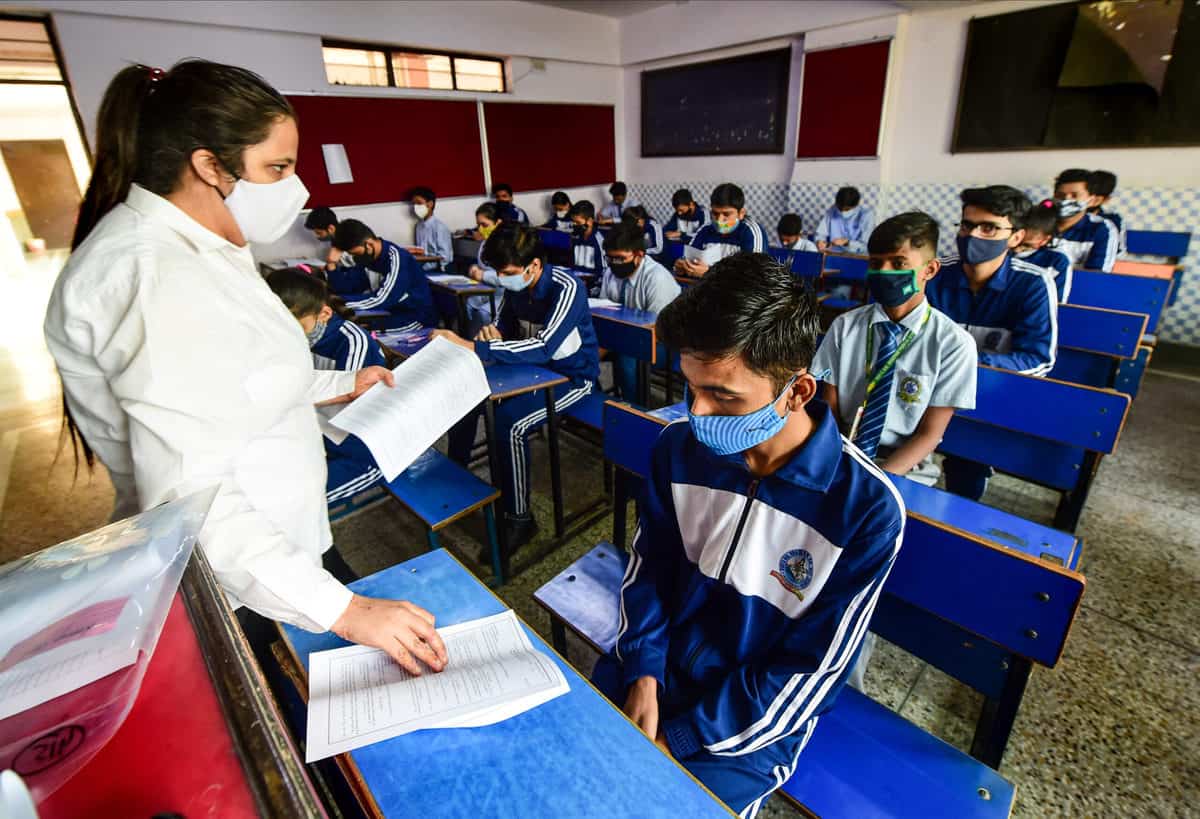

The Annual Survey of Education Results – ASER Centre conducts the Annual Status of Education Survey across 28 states of India. It released its 16th annual report on the status of education in the year 2021 this week. Due to the pandemic, this time the respondents were reached over phone, as opposed to the usual fieldwork carried out by the team. Also, as India had one of the longest durations of school closures, the report focused on school enrolments and the support of children at home. The survey was done across 28 states, covering 581 districts with 17,000 villages and more than 75,000 households.
Enrolment patterns
There has been a significant increase in the proportion of children enrolling in government schools from 2018 to 2020. This can be seen in the big jump of 5% in government school enrolment. Although private schools have had significant increases throughout the years, they have been plateauing for the last 5 years. This time, however, a first time drop in private schools is observed. It is interesting to note that last year there was no shift to government schools, only a significant increase in not currently enrolled students, most of whom were younger children. There are a variety of reasons for this, the most popular being that since many people lost their jobs during the pandemic, the resultant financial distress drove families to enroll their children into government schools, which cost less than private schools. Another reason was that many budget private schools shut down during the pandemic. In the survey conducted, it was found that around 70% of government school teachers agree that enrolment increased during the last year.
Another interesting fact has been that the enrolment patterns have not been restricted by age and gender. Even before the COVID-19 pandemic, more girls were enrolled in government schools compared to boys, this trend continues, although the gap has narrowed. The trend in enrolment patterns can be seen throughout the country. However, the highest increases in government school enrolments were in UP and Kerala.
With regards to children not enrolled in schools, their proportion is higher in 2020 and 2021 as compared to 2018. Between 2020 and 2021 the numbers were relatively unchanged. The children in here are relatively young more boys are not enrolled in schools compared to girls. Since it is easier to enroll young children, it is entirely possible that these children will re-enroll in schools soon.
Incidence of tuition classes
Here we see a significant increase in the proportion of students taking paid 3rd party tuition classes. Almost 40% of students in 2019 were attending tuition classes as opposed to less than 30% students in 2018. This marked increase is seen across all States except for Kerala. In Kerala, there has been a large decrease in students attending private tuitions from 28% to 18%. It is speculated that the reason for this is that given Kerala’s history of having a high number of COVID-19 cases, the parents have been extra-careful in sending their wards to crowded tuition centres.
Smartphone availability
Between the years 2018 and 2021, Smartphone penetration doubled in rural India, from 30% to 63% and around 67.6% of children had at least one smartphone in their home. However, 26% of children have no access to smartphones. In 2021, 27% of parents bought a smartphone for their children to study. There exists a fair amount of variation with regards to access to smartphones for children, the most notable being younger children having less access to smartphones compared to older children.
Educational support for children
A major finding was that many family members stepped up to help the children with their education. Around 75% of children reported that they had been helped by a family member. This has come down since schools have been reopened. The major reason was that the elder family members started working as the lockdown was lifted. This seems to be further corroborated by the fact that children got less support from their fathers in their studies in 2021 as compared to 2020.
The report has found that around 80% of children have textbooks for their grades. In this regard, government schools outperform private schools, with 84% of government schools giving out textbooks compared with 72% private schools. It was also found that the availability of non-textbook learning materials (homework, worksheets etc.) for students has also gone up since 2020.
As said previously, the report captures an essential snapshot of the transition of schools from being completely closed to completely open and hence is a good guide to the future. The results as of now seem to be good and give grounds for optimism. However, given that we know little about the future of the pandemic, there is a considerable degree of uncertainty regarding the future. The pandemic has impacted hunger, nutrition and primary education negatively and in a big way. The economic costs of all these factors are going to result in sluggish economic growth and lower productivity for quite a while.
Amir Ullah Khan and Ismail Shaikh are researchers at the Centre for Development Policy and Practice, Hyderabad

